Neuroscience
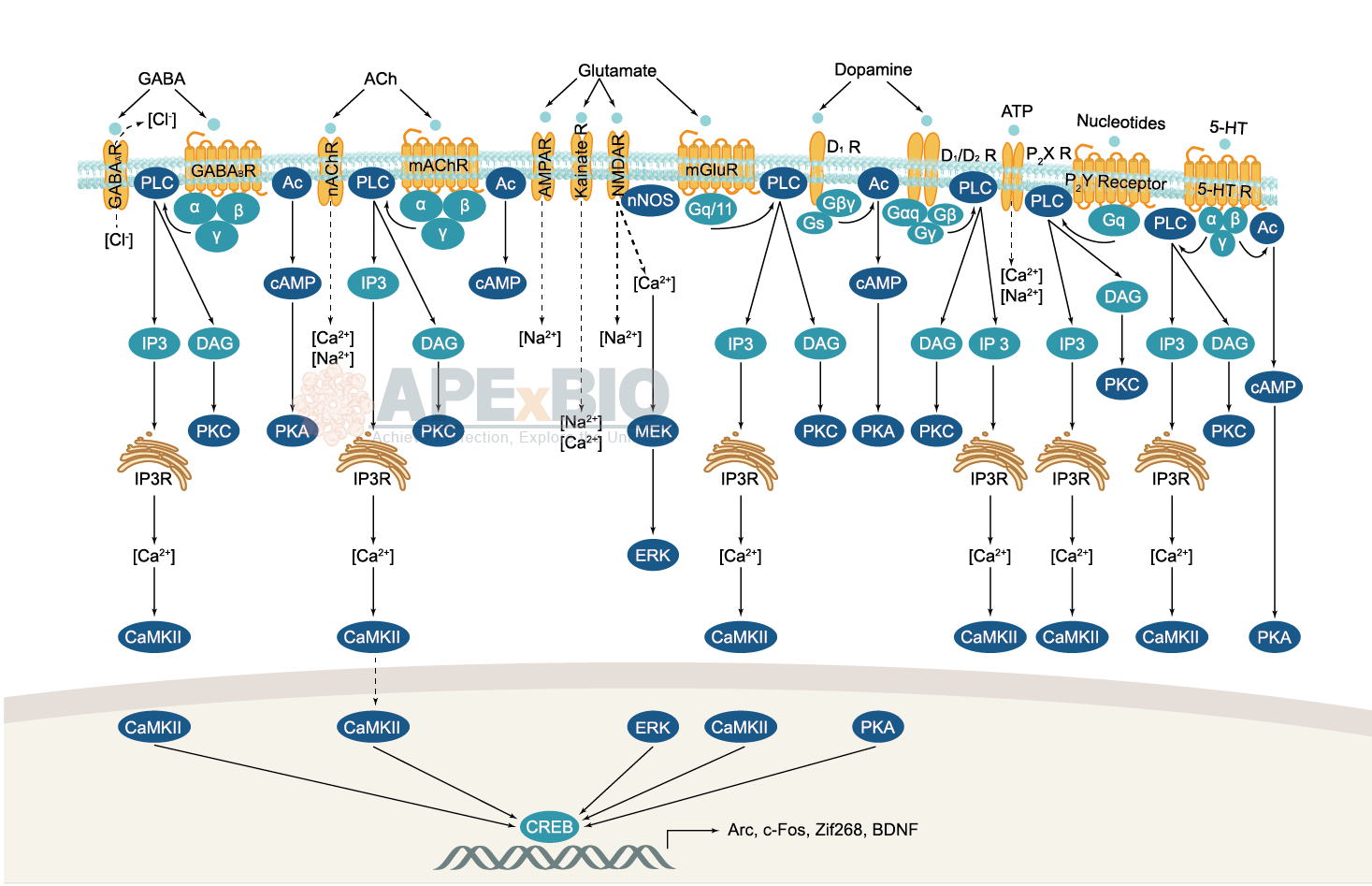
Neurotransmitter receptors function via various G-protein coupled and G-protein independent mechanisms that activate downstream intracellular signaling pathways such as cAMP/PKA, PI3K/AKT, phospholipase A2, and phospholipase C pathways. For instance, dopamine receptors act through adenylate cyclase to activate PKA and other signaling molecules, thereby mediate gene expression through the actions of CREB and other transcription factors. Other neurotransmitters such as NMDAR or AMPAR are associated with ion channels that control flux of Ca2+ and Na+, thus propagating the action potential across the post-synaptic neuron.
Dysfunctions in GABAergic/glutamatergic/serotonergic/dopaminergic pathways result in a broad range of neurological disorders such as chronic pain, neurodegenerative diseases, and insomnia, as well as mental disorders including schizophrenia, bipolar disorder, depression, and addiction.
-
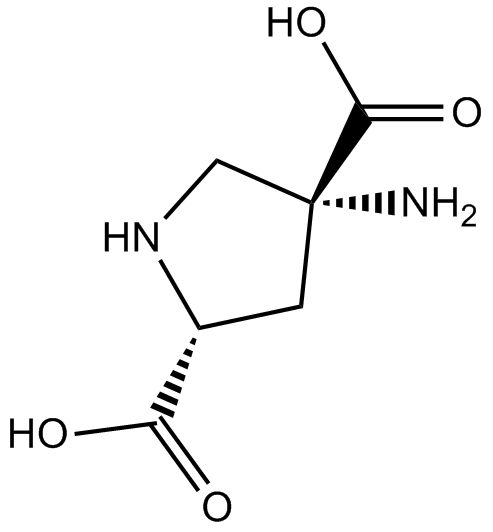 B6634 (2R,4R)-APDCSummary: group II metabotropic glutamate receptor agonist
B6634 (2R,4R)-APDCSummary: group II metabotropic glutamate receptor agonist -
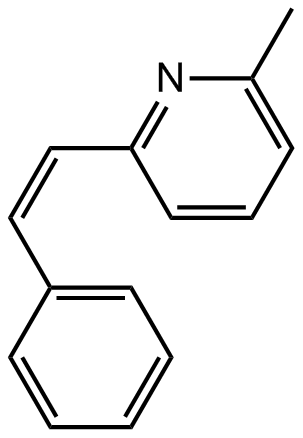 B6635 SIB 1893Summary: mGlu5 antagonist
B6635 SIB 1893Summary: mGlu5 antagonist -
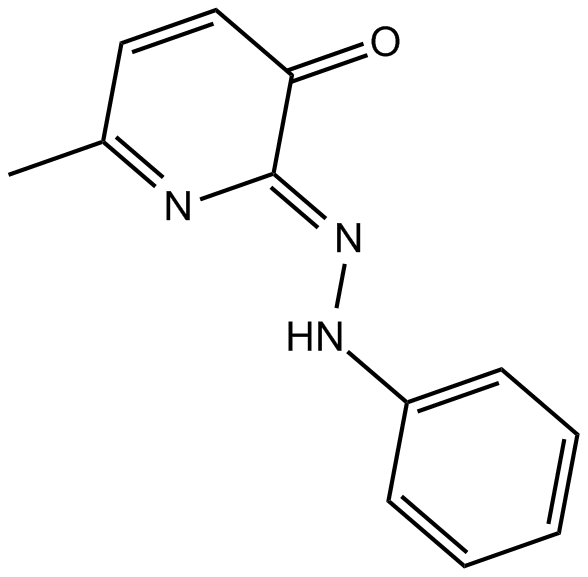 B6636 SIB 1757Summary: mGlu5 antagonist
B6636 SIB 1757Summary: mGlu5 antagonist -
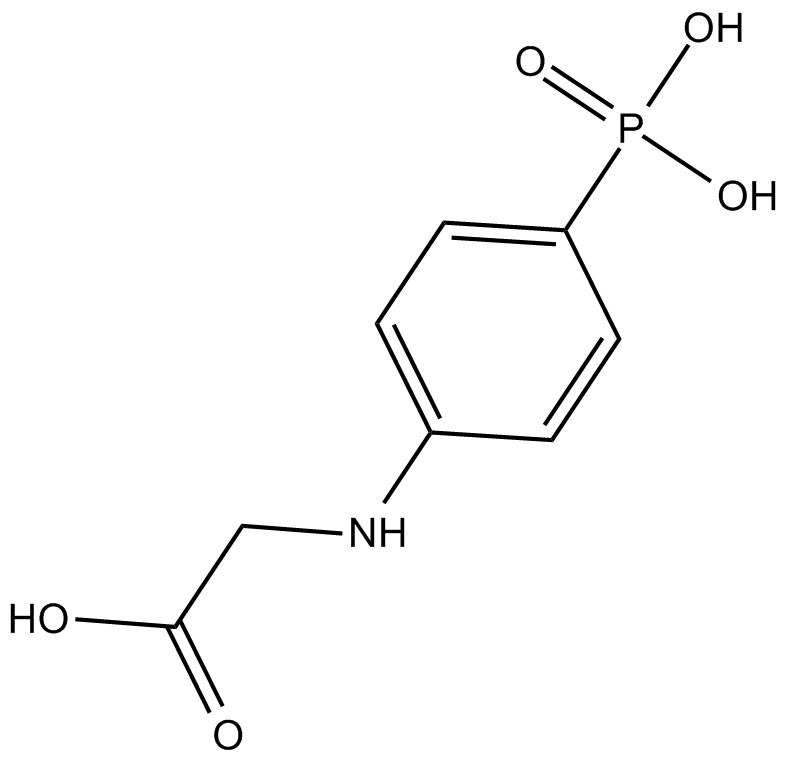 B6640 (RS)-PPGSummary: group III metabotropic glutamate receptor agonist
B6640 (RS)-PPGSummary: group III metabotropic glutamate receptor agonist -
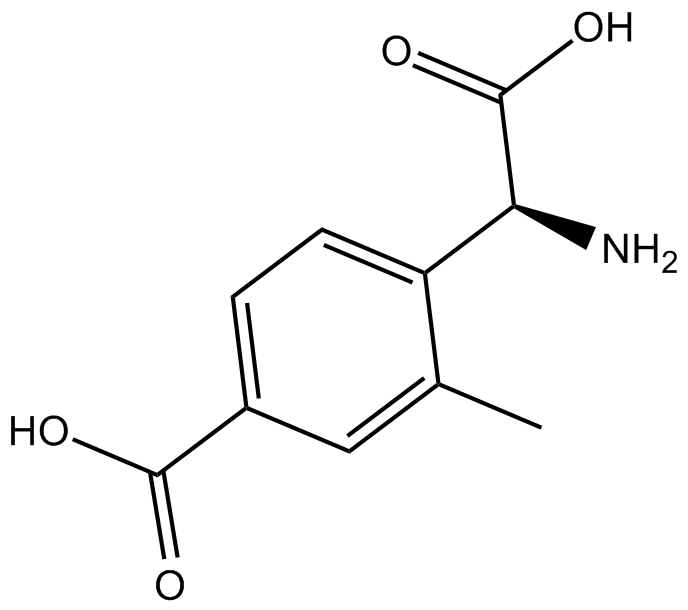 B6649 LY 367385Summary: mGlu1a receptor antagonist
B6649 LY 367385Summary: mGlu1a receptor antagonist -
 B6657 CY 208-243Summary: dopamine D1 receptor agonist
B6657 CY 208-243Summary: dopamine D1 receptor agonist -
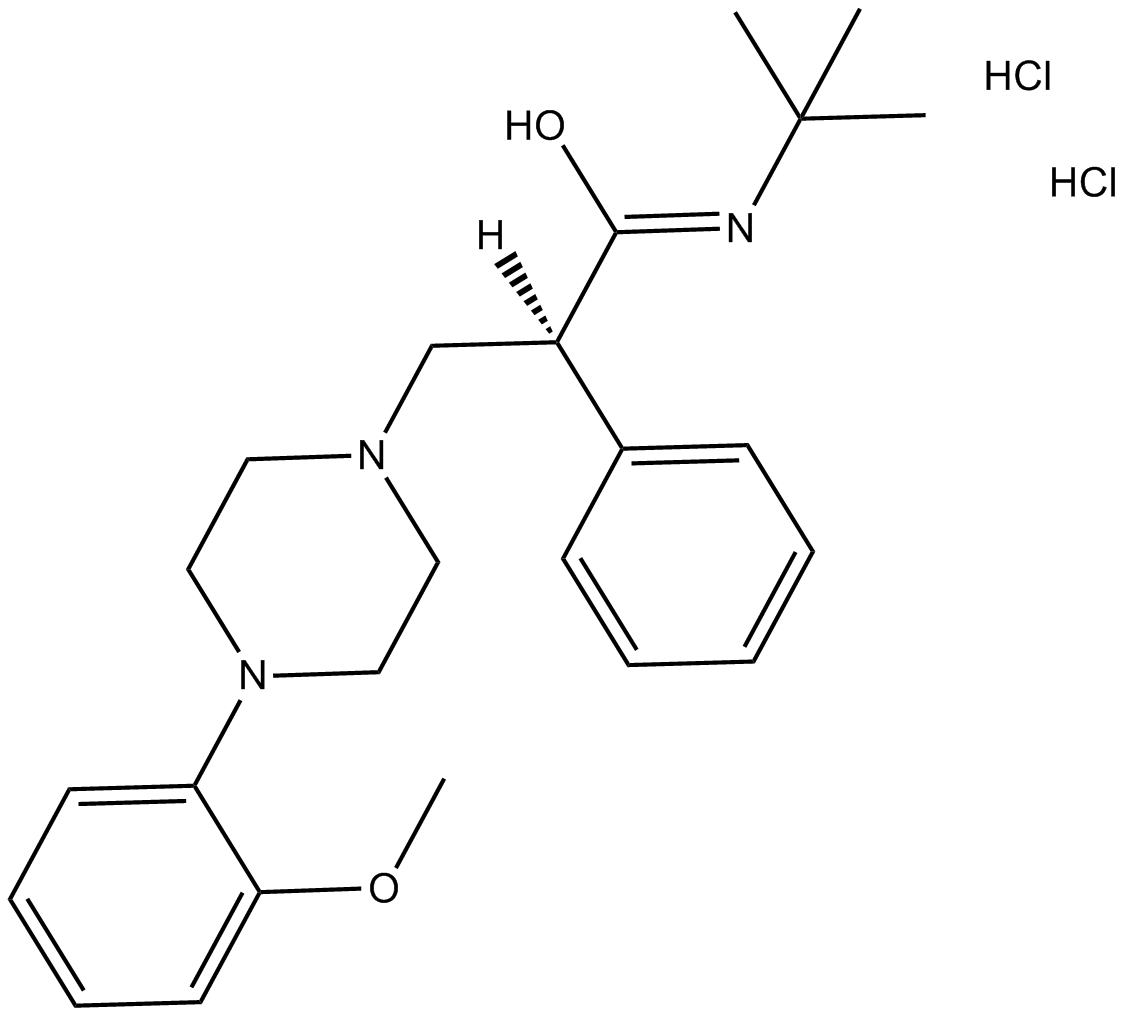 B6659 (S)-WAY 100135 dihydrochlorideSummary: 5-HT1A receptor antagonist,potent and selective
B6659 (S)-WAY 100135 dihydrochlorideSummary: 5-HT1A receptor antagonist,potent and selective -
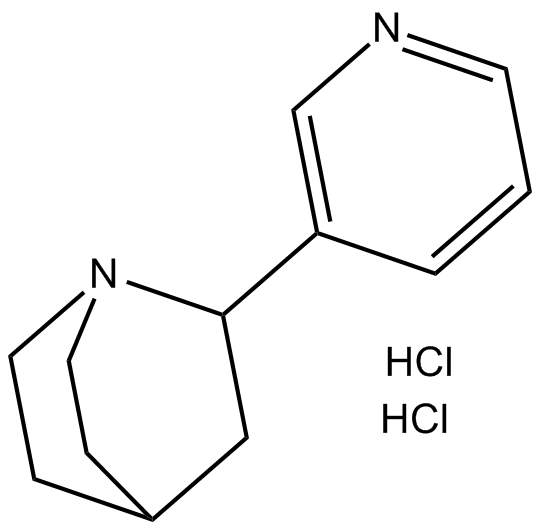 B6666 RJR 2429 dihydrochlorideSummary: nAChR agonist that displays selectivity for α4β2
B6666 RJR 2429 dihydrochlorideSummary: nAChR agonist that displays selectivity for α4β2 -
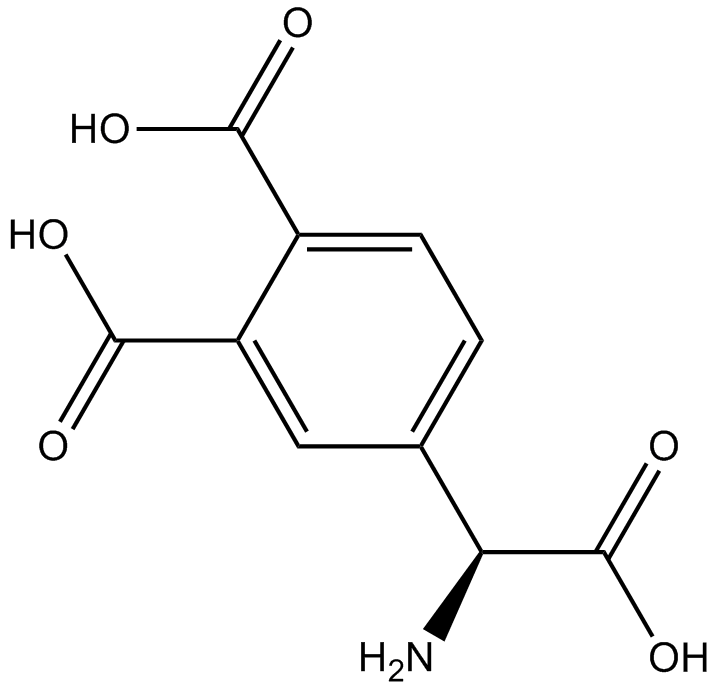 B6679 (S)-3,4-DCPGSummary: mGlu8a agonist
B6679 (S)-3,4-DCPGSummary: mGlu8a agonist -
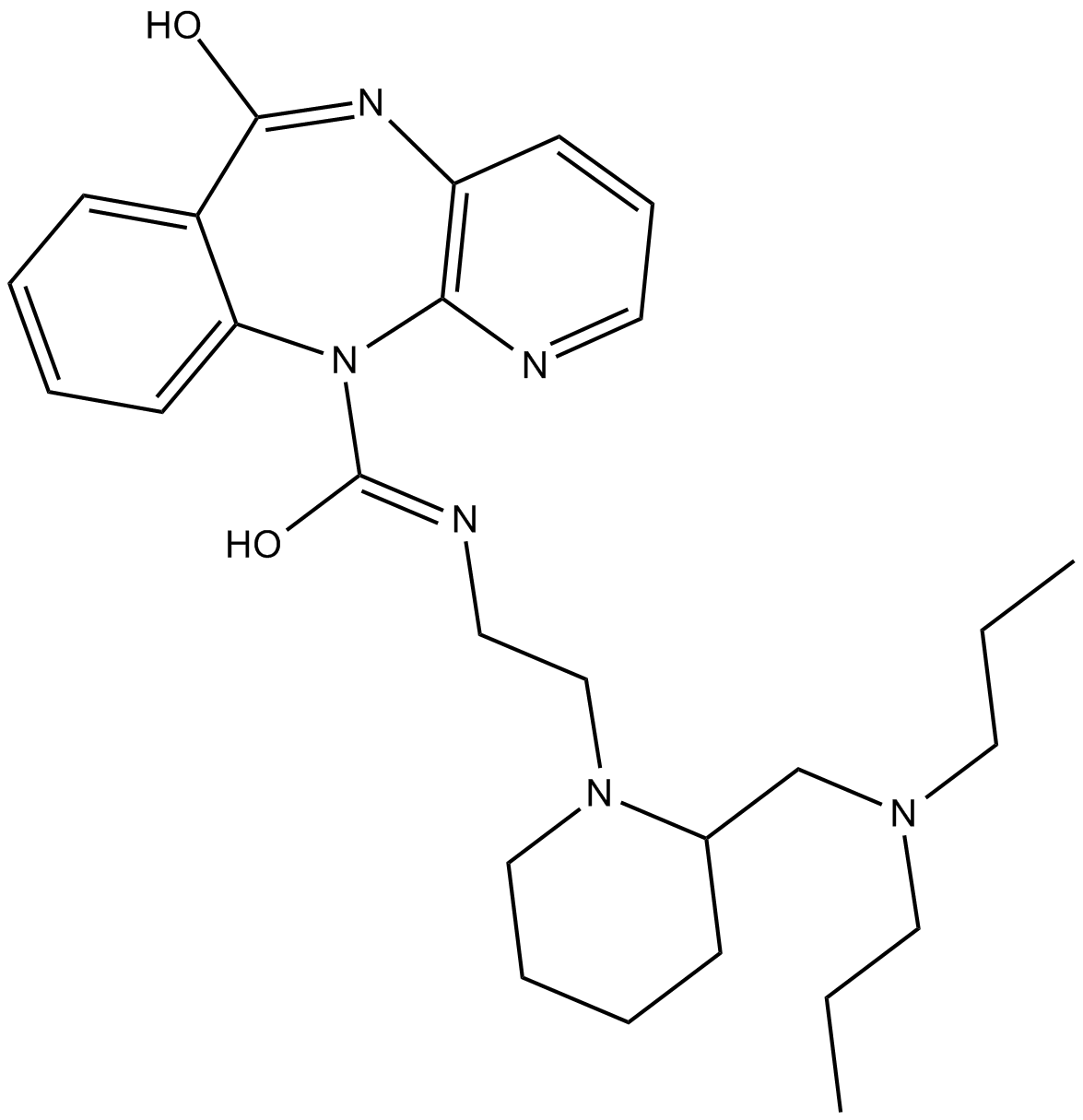 B6697 AF-DX 384Summary: M2/M4 selective antagonist
B6697 AF-DX 384Summary: M2/M4 selective antagonist

